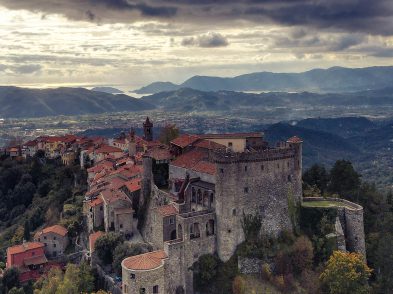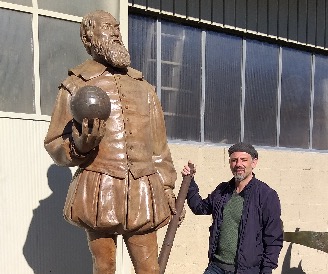Etruscan Seduction: From the Secrets of Holkham Hall to the Wonders of the British Museum, the current exhibition at Palazzo Casali in Cortona has already done more than enthral viewers. The exhibit, a joint effort of the Museo dell’Accademia Etrusca e della Città di Cortona, the British Museum and Holkham Hall, has brought 50 Etruscan artifacts back home for an extended visit.
Not only has the exhibit been extended to late September (originally scheduled to close July 21, see box) but interest in a future joint exhibit was expressed by Judith Swaddling, head of the Italian collection of the British Museum, who attended at the Cortona exhibition’s opening, along with its curators Paolo Bruschetti and Paolo Giulierini, and Suzanne Reynolds, curator of the archives at Holkham Hall and keeper of the manuscript by Thomas Dempster that started, it seems, the ‘Etruscan seduction’ of the British.
Holkham Hall, in Norfolk, England, the majestic Palladian-style villa mansion of Lord Coke, holds the original copy of Dempster’s De Etruria Regali Libri Septem, considered the first handbook of Etruscology. The Scottish scholar (1579–1625) wrote it while teaching at the Studio di Pisa, where he was summoned by Grand Duke Cosimo II de’ Medici. A century later, Lord Coke rediscovered the manuscript while browsing in the antiques market in Florence. He financed its publication in 1723, having it first revised and corrected by Filippo Buonarroti (descendent of Michelangelo, then keeper of his house-museum, so fond of archaeology that he was the first Lucumon of the Accademia Etrusca in Cortona, which he helped to found in 1727).
Publication of the manuscript in Britain sparked a frenzy for all things Etruscan among the English who did the Grand Tour, filling their trunks with ancient finds, some less rather than more legally obtained than others.
The British Museum bought its first Etruscan vases in 1756, and London’s first exhibit of Etruscan artifacts, in 1837, featured objects from the Campanari family, antiquities dealers from Tuscany who had a surplus of Etruscan sarcophagi and other items to sell. The exhibit was a success, generating another wave of Etruscan mania, which brought English travellers to Tuscany and then elsewhere in Italy in masses to buy (and plunder) not only Etruscan but all kinds of ancient objects in Italy. This continued until the first safeguarding law was enacted in 1909. The exhibit in Cortona features objects legally acquired over these years, among them the British Museum’s bronzes, ceramics, jewels, urns and votive statues.
Although the museum houses one of the richest collections of Etruscan findings in the world, Etruscan art was last featured in a major exhibit in London in 1999, a ‘cameo appearance’ at the Accademia Italiana, featuring the famous sculpture Ombra della Sera and other masterpieces from Volterra.
As one contemplates the Etruscan statues placidly reclined on their sarcophagi in Cortona, sporting their enigmatic smiles, it is nice to imagine that they are happy to be home and look forward to more opportunities to be viewed by appreciative visitors back in UK.
Etruscan Seduction: From the Secrets of Holkham Hall to the Wonders of the British Museum
Until September 30
Palazzo Casali
Piazza Signorelli 9, Cortona (AR)
057/5630415 – 637235
http://www.cortonamaec.org/index.php







